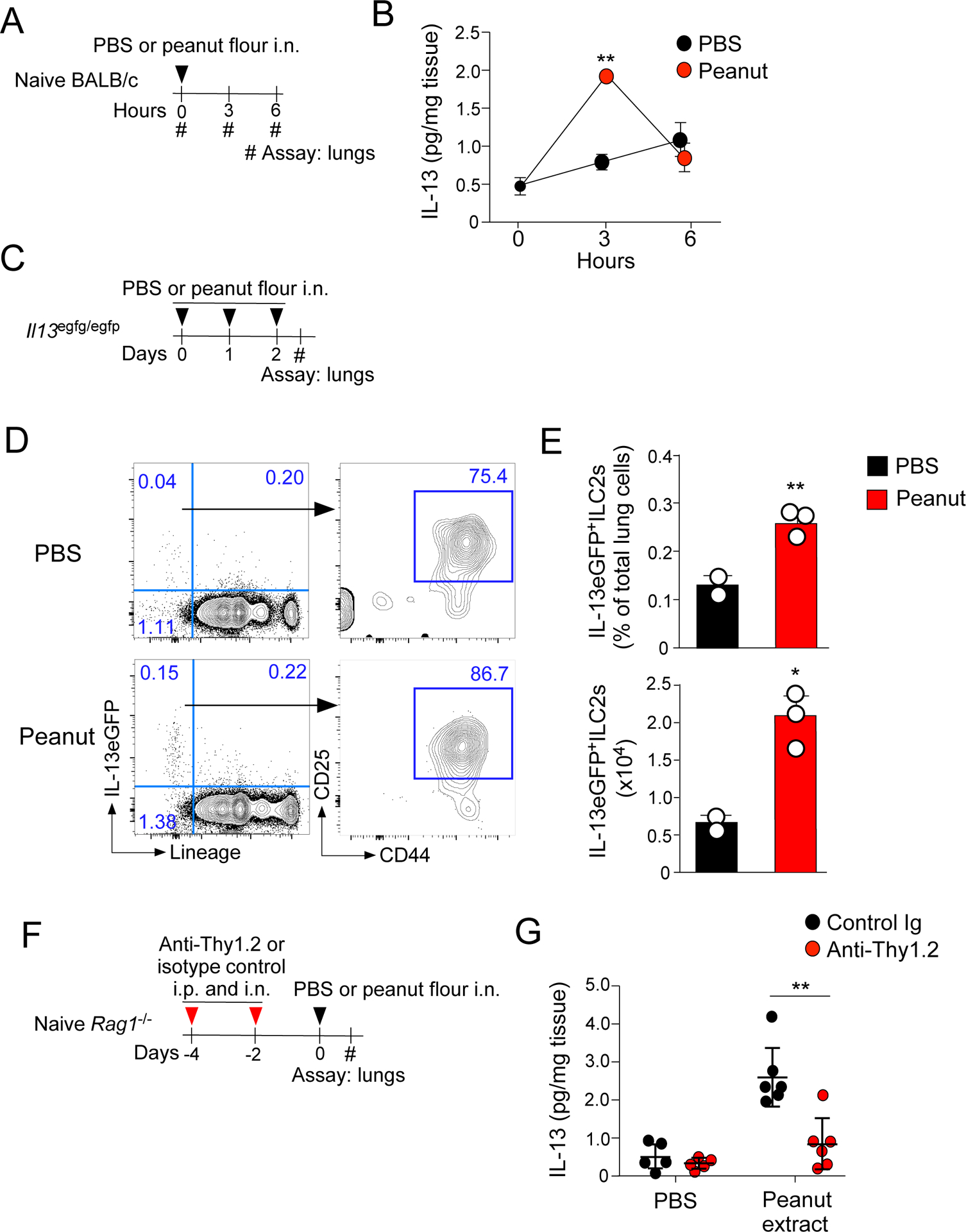Figure 4.

ILC2s are the primary source of IL-13 response immediately after airway PN exposure. A. WT BALB/c mice were exposed once to peanut flour or PBS, and lungs were harvested 3 or 6 hours later. B. IL-13 levels from lung lysate were assessed by ELISA. **P<0.01 compared to the mice exposed to PBS. C. Il13egfp/egfp mice were exposed i.n. to peanut flour or PBS for 3 consecutive days; in these experiments, Il13egfp/egfp mice were used to report IL-13 expression. Lungs were harvested after 24 hours and analyzed by flow cytometry. D. Representative gating strategy for each treatment group, preceded by gating for CD45+, singlet, living cells. E. Frequency and cell number of IL13eGFP+ ILC2s. Data are representative of two experiments for two PBS-exposed and four peanut flour-exposed Il13gfp/gfp mice. *P<0.05 and **P<0.01 compared to the mice exposed to PBS. F. To deplete ILC2s, Rag1−/− BALB/c mice were treated i.p. and i.n. with anti-Thy1.2-depleting antibody or isotype-control antibody on days −4 and −2. Mice were then exposed once i.n. to peanut flour or PBS. Three hours later, lungs were harvested and processed for ELISA analysis. G. IL-13 levels from lung lysates were assessed by ELISA. Data are representative of two experiments of 2–6 mice each. **P<0.01 between the groups indicated by horizontal lines. Error bars represent mean ± SEM. Each circle represents individual mouse.
